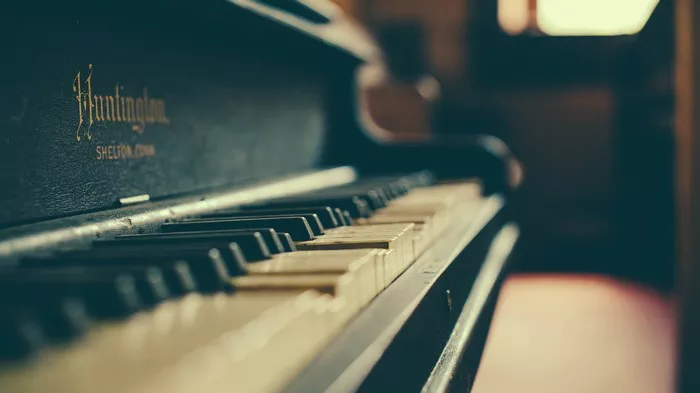Classical piano music is renowned for its depth, complexity, and emotional range. Throughout history, composers have crafted pieces that not only showcase their technical prowess but also evoke profound emotions. Among the vast repertoire, certain piano works have achieved iconic status, celebrated for their beauty and technical demands. This article explores eleven of the best classical piano pieces, each representing a significant contribution to the piano canon. From Baroque masterpieces to Romantic showpieces and modern compositions, these pieces highlight the versatility and enduring appeal of the piano.
11 Best Classical Music Piano Pieces of All the time
1. Johann Sebastian Bach: “The Well-Tempered Clavier, BWV 846-893”
Bach’s “The Well-Tempered Clavier” is a cornerstone of classical piano music. It consists of two books, each containing 24 preludes and fugues in all major and minor keys. This collection showcases Bach’s mastery of counterpoint and his ability to create intricate, yet beautiful, music. The pieces are known for their technical demands and intellectual depth, making them a favorite among pianists and music scholars.
2. Domenico Scarlatti: “Sonatas”
Scarlatti composed over 500 keyboard sonatas, many of which are still popular today. These short pieces are known for their lively, dance-like rhythms and inventive use of the keyboard. Scarlatti’s sonatas often require quick hand movements and precise finger work, making them both challenging and rewarding to play.
3. Wolfgang Amadeus Mozart: “Piano Sonata No. 11 in A Major, K. 331”
Mozart’s “Piano Sonata No. 11” is best known for its final movement, the “Rondo alla Turca.” This lively and rhythmic piece mimics the sound of Turkish Janissary bands and is a favorite encore piece for pianists. The sonata as a whole demonstrates Mozart’s elegance and charm, with its graceful melodies and balanced structure.
4. Ludwig van Beethoven: “Piano Sonata No. 14 in C-sharp Minor, Op. 27 No. 2 (‘Moonlight Sonata’)”
Beethoven’s “Moonlight Sonata” is one of the most famous piano pieces in the classical repertoire. The first movement, with its haunting and ethereal quality, has captivated listeners for generations. The sonata’s contrasting movements, including the energetic and stormy final movement, showcase Beethoven’s innovative approach to piano composition.
5. Frédéric Chopin: “Ballade No. 1 in G Minor, Op. 23”
Chopin’s “Ballade No. 1” is a masterpiece of Romantic piano music. It is known for its lyrical melodies, dramatic contrasts, and virtuosic demands. This piece is a favorite among pianists for its expressive depth and technical challenges. Chopin’s use of rubato and intricate ornamentation make it a quintessential Romantic work.
6. Franz Liszt: “Hungarian Rhapsody No. 2 in C-sharp Minor”
Liszt’s “Hungarian Rhapsody No. 2” is a dazzling showpiece that combines Hungarian folk melodies with virtuosic piano techniques. The piece features rapid octaves, intricate finger work, and dramatic dynamic changes. It is a favorite in piano competitions and concerts, showcasing the performer’s technical prowess and musicality.
7. Robert Schumann: “Carnaval, Op. 9”
Schumann’s “Carnaval” is a suite of character pieces, each representing different characters at a masked ball. The pieces are filled with vivid imagery and contrasting moods. Schumann’s use of musical cryptograms and intricate textures make “Carnaval” a fascinating and rewarding work for both performers and listeners.
8. Claude Debussy: “Clair de Lune”
Debussy’s “Clair de Lune” is one of the most beloved piano pieces of all time. It is part of his “Suite Bergamasque” and is known for its dreamy and atmospheric quality. The piece uses impressionistic techniques, such as parallel chords and fluid, ambiguous harmonies, to create a sense of timeless beauty.
9. Maurice Ravel: “Gaspard de la Nuit”
Ravel’s “Gaspard de la Nuit” is one of the most technically demanding works in the piano repertoire. The piece is inspired by the poems of Aloysius Bertrand and consists of three movements: “Ondine,” “Le Gibet,” and “Scarbo.” Each movement presents unique challenges, from the shimmering water effects in “Ondine” to the eerie tolling bells in “Le Gibet” and the frenetic, nightmarish “Scarbo.”
10. Sergei Rachmaninoff: “Prelude in C-sharp Minor, Op. 3 No. 2”
Rachmaninoff’s “Prelude in C-sharp Minor” is one of his most famous works. The piece is known for its dramatic opening chords and melancholic melody. It requires great technical skill and emotional depth to perform effectively. The prelude has become a staple in the concert repertoire and is often used as an encore piece.
11. Igor Stravinsky: “Petrushka”
Stravinsky’s “Petrushka” is a piano transcription of his ballet score. The piece is known for its rhythmic complexity and vibrant, colorful textures. Stravinsky’s use of dissonance and unconventional rhythms presents significant challenges for the performer. “Petrushka” is a striking example of 20th-century piano music, blending elements of folk music with modernist techniques.
See Also: 6 Classical Music Pieces Inspired by Swans: All You Want to Know
Conclusion
Exploring the eleven best classical piano pieces offers a glimpse into the rich tapestry of piano music’s history. Each piece, from Bach’s intricate fugues to Rachmaninoff’s sweeping melodies, captures a unique aspect of the piano’s expressive capabilities. These works have not only stood the test of time but also continue to inspire and challenge pianists around the world. Whether you’re a performer or a listener, delving into these masterpieces provides a deeper appreciation for the artistry and innovation that define classical piano music.

